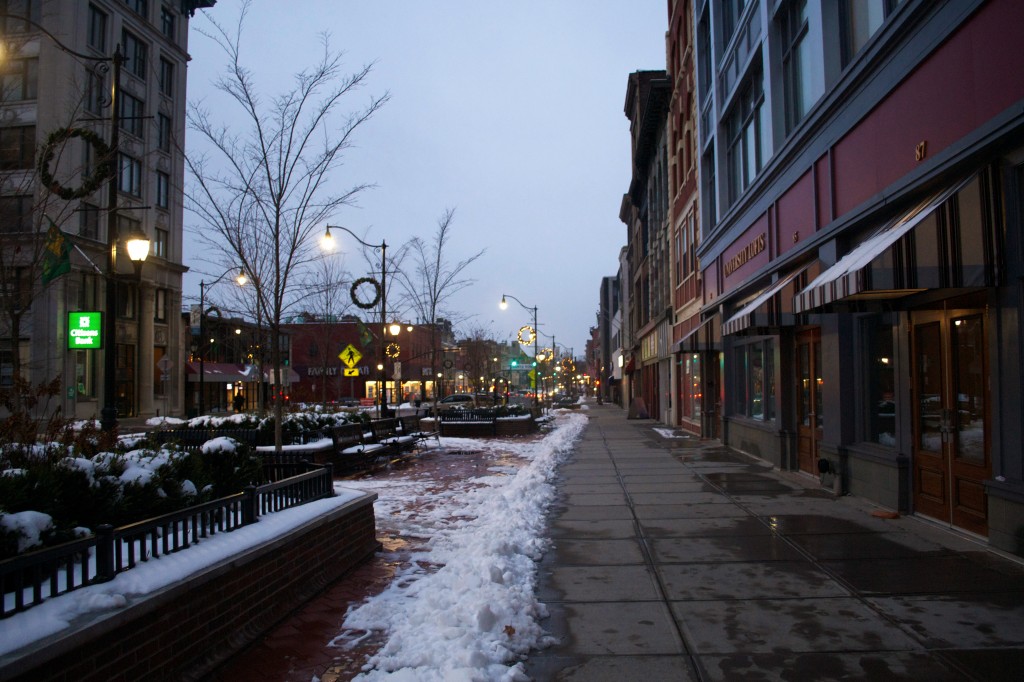When finals end and students head home for winter break, favorite Downtown businesses have learned to adjust to the time off from the University rush.
Binghamton has a population of approximately 47,000 and when school is in session, students account for another 15,000 in the area. This means that when students are on vacation, a large portion of the city’s population vanishes.
Most businesses Downtown are affected by this fluctuation, but some feel the pressure more than others.
Larry Shea, the owner of Tom & Marty’s, said that business decreases by about 50 percent when students are not around. Because of this, he said that they cut back on their staff during January, but this happens somewhat naturally since some of their employees are students.
“State Street bars in general, we contract significantly when the students are gone,” Shea said. “For the bar business [students] are absolutely vital, we build into it. It’s part of our business plan knowing that three and half months a year [students] are gone.”
A drop-off in business is not always bad. According to Marie McKenna, co-owner of restaurant The Lost Dog, these breaks are also a time to get maintenance and repairs done. However, she added that it is strange to not see students around.
“From the minute we opened we’ve been a student-driven restaurant,” McKenna said. “You definitely notice the streets are quieter without the students here. We don’t like it.”
Even non-student-oriented businesses have come to rely on Binghamton University for a steady flow of revenue.
“We started out as a predominantly local-based business and we’ve grown to have a strong BU following,” said Rob Ruggiero, owner of Café Oasis. “I would say we would still be able to survive without the University students, but it definitely is a big boost for our business.”
David Whalen owns Binghamton Hots, a local restaurant that opened in conjunction with the recent student housing complexes Downtown. Without students, he said staying open becomes more difficult.
“I’ve considered amending our hours while the students are gone, though I haven’t done that yet,” Whalen said. “I don’t think we rely solely on the student population to stay in business, but they’re certainly a very large chunk of our clientele.”
Andrew Dervay, a junior majoring in computer engineering, is from Apalachin, New York, which is about 15 minutes away. He said he frequents Downtown Binghamton over break, and that it is a very different scene.
“There is a noticeably older crowd at the bars, you don’t have people spilling out into the streets like a normal Friday night,” Dervay said. “When students are around there are simply more people spending money Downtown.”
Some businesses factor the month of January into their plans as a time that sales dip down. Chris Diemand, owner of the smoke shop Sugar Mountain, one of many shops on Main Street, said that for him, sales drop approximately 20 percent when students are gone. But it’s better than the alternative; he says the expansion of student life Downtown is good for the city.
“In the last 10 years there have been many more small businesses that have popped up and there’s more development,” Diemand said. “It’s getting more of a college town, eclectic feel to it.”
Ryan Vaughan, an English professor who lives in Endicott, said that it is always noticeable when students go home for break, and likened the impact the the University has on the city to IBM 20 years ago.
“The University is the new community, the economy,” Vaughan said. “This is everything.”



